Predicting Successful Generation and Inhibition of Seizure-like Afterdischarges and Mapping Their Seizure Networks Using fMRI
- PMID: 32101734
- PMCID: PMC8720841
- DOI: 10.1016/j.celrep.2020.01.095
Predicting Successful Generation and Inhibition of Seizure-like Afterdischarges and Mapping Their Seizure Networks Using fMRI
Abstract
To understand the conditions necessary to initiate and terminate seizures, we investigate optogenetically induced hippocampal seizures with LFP, fMRI, and optogenetic inhibition. During afterdischarge induction using optogenetics, LFP recordings show that stimulations with earlier ictal onset times are more likely to result in afterdischarges and are more difficult to curtail with optogenetic inhibition. These results are generalizable across two initiation sites, the dorsal and ventral hippocampus. fMRI shows that afterdischarges initiated from the dorsal or ventral hippocampus exhibit distinct networks. Short-duration seizures initiated in the dorsal and ventral hippocampus are unilateral and bilateral, respectively, while longer-duration afterdischarges recruit broader, bilateral networks. When optogenetic inhibition is ineffective at stopping seizures, the network activity spreads more extensively but largely overlaps with the network activity associated with seizures that could be curtailed. These results provide insights into how seizures can be inhibited, which has implications for targeted seizure interventions.
Keywords: afterdischarge; epilepsy; fMRI; generation; hippocampus; inhibition; network; optogenetrics; seizure; stopping.
Copyright © 2020. Published by Elsevier Inc.
Conflict of interest statement
Declaration of Interests J.H.L. is a founder of LVIS.
Figures
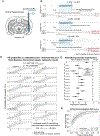
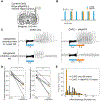
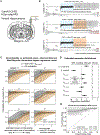
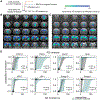
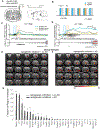

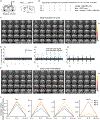
Similar articles
-
MRI compatible optrodes for simultaneous LFP and optogenetic fMRI investigation of seizure-like afterdischarges.Neuroimage. 2015 Dec;123:173-84. doi: 10.1016/j.neuroimage.2015.07.038. Epub 2015 Jul 21. Neuroimage. 2015. PMID: 26208873 Free PMC article.
-
Optogenetic fMRI reveals distinct, frequency-dependent networks recruited by dorsal and intermediate hippocampus stimulations.Neuroimage. 2015 Feb 15;107:229-241. doi: 10.1016/j.neuroimage.2014.10.039. Epub 2014 Oct 22. Neuroimage. 2015. PMID: 25462689 Free PMC article.
-
Optogenetically induced seizure and the longitudinal hippocampal network dynamics.PLoS One. 2013 Apr 10;8(4):e60928. doi: 10.1371/journal.pone.0060928. Print 2013. PLoS One. 2013. PMID: 23593349 Free PMC article.
-
A network mechanism underlying hippocampal seizure-like synchronous oscillations.Neurosci Res. 2008 Jul;61(3):227-33. doi: 10.1016/j.neures.2008.04.002. Epub 2008 Apr 20. Neurosci Res. 2008. PMID: 18457889 Review.
-
Epilepsy-associated alterations in hippocampal excitability.Rev Neurosci. 2017 Apr 1;28(3):307-334. doi: 10.1515/revneuro-2016-0059. Rev Neurosci. 2017. PMID: 28099137 Review.
Cited by
-
In vivo inhibition of epileptiform afterdischarges in rat hippocampus by light-activated chloride channel, stGtACR2.CNS Neurosci Ther. 2023 Mar;29(3):907-916. doi: 10.1111/cns.14029. Epub 2022 Dec 8. CNS Neurosci Ther. 2023. PMID: 36482869 Free PMC article.
-
Solving brain circuit function and dysfunction with computational modeling and optogenetic fMRI.Science. 2022 Nov 4;378(6619):493-499. doi: 10.1126/science.abq3868. Epub 2022 Nov 3. Science. 2022. PMID: 36327349 Free PMC article. Review.
-
Magnetogenetic stimulation inside MRI induces spontaneous and evoked changes in neural circuits activity in rats.bioRxiv [Preprint]. 2023 Dec 14:2023.12.14.571681. doi: 10.1101/2023.12.14.571681. bioRxiv. 2023. Update in: Front Neurosci. 2024 Oct 01;18:1459120. doi: 10.3389/fnins.2024.1459120. PMID: 38168269 Free PMC article. Updated. Preprint.
-
Magnetogenetic stimulation inside MRI induces spontaneous and evoked changes in neural circuits activity in rats.Front Neurosci. 2024 Oct 1;18:1459120. doi: 10.3389/fnins.2024.1459120. eCollection 2024. Front Neurosci. 2024. PMID: 39411150 Free PMC article.
-
Optogenetic fMRI for Brain-Wide Circuit Analysis of Sensory Processing.Int J Mol Sci. 2022 Oct 14;23(20):12268. doi: 10.3390/ijms232012268. Int J Mol Sci. 2022. PMID: 36293125 Free PMC article.
References
-
- Allen PJ, Josephs O, and Turner R (2000). A method for removing imaging artifact from continuous EEG recorded during functional MRI. NeuroImage 12, 230–239. - PubMed
-
- Bates D, Mächler M, Bolker B, and Walker S (2014). Fitting linear mixed-effects models using lme4. arXiv preprint arXiv:14065823.
-
- Christie IN, Wells JA, Southern P, Marina N, Kasparov S, Gourine AV, and Lythgoe MF (2013). fMRI response to blue light delivery in the naive brain: implications for combined optogenetic fMRI studies. Neuroimage 66, 634–641. - PubMed
Publication types
MeSH terms
Substances
Grants and funding
LinkOut - more resources
Full Text Sources
Other Literature Sources
Medical

